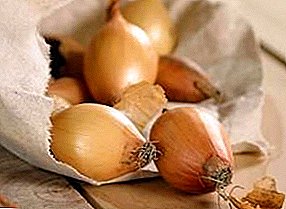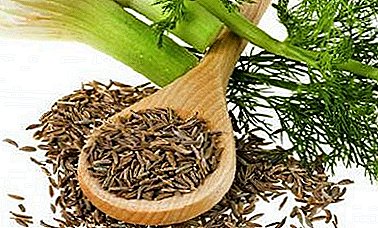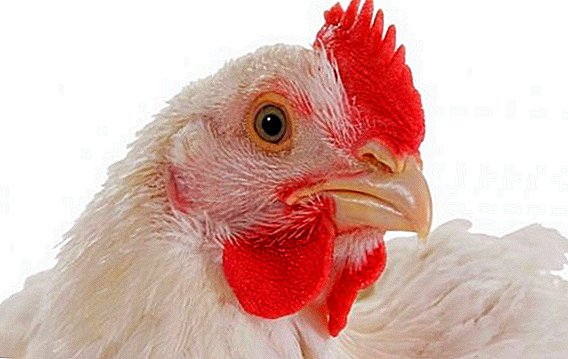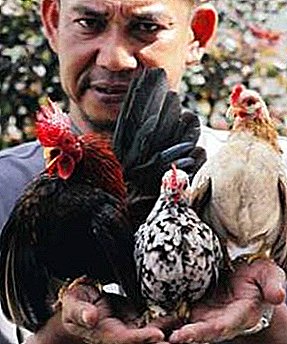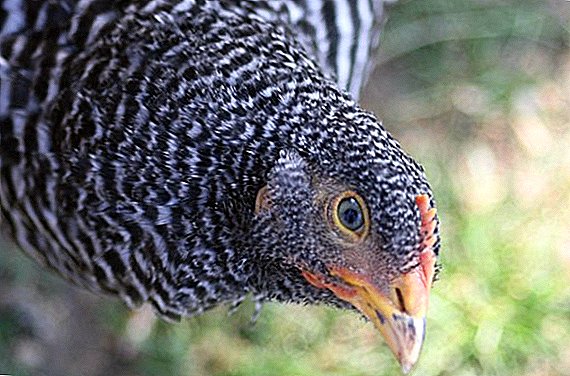 Many poultry farmers prefer to breed breeds of chickens that would give not only a large number of eggs, but also a lot of tasty meat. Today, one of these breeds are Amrox chickens, which are becoming increasingly popular among the poultry farmers of our country. In this article we will talk about the characteristics of this breed of chickens, the characteristics of housing and care, as well as how to raise and feed the chickens at home.
Many poultry farmers prefer to breed breeds of chickens that would give not only a large number of eggs, but also a lot of tasty meat. Today, one of these breeds are Amrox chickens, which are becoming increasingly popular among the poultry farmers of our country. In this article we will talk about the characteristics of this breed of chickens, the characteristics of housing and care, as well as how to raise and feed the chickens at home.
Description and Features
This breed of birds has many distinctive characteristics by which it can be recognized among other breeds. 
Selection
Amrox chickens were first bred in the United States in the middle of the XIX century. Over the course of a hundred-year historical stage, these economic birds did not undergo any genetic mutation.
But two years after the end of World War II, Amrox got into the territory of defeated Germany, where their genetic code was improved by breeding. Thus, this breed of chickens has acquired its modern look and to this day is the standard of breeds.
Did you know? Amroks breed was officially registered in 1848.
Breed such chickens only on private poultry farms. There is no global industry; amrox is retained as a reference in collection herds. In case of loss of the genetic code (as a reserve), some of these birds are stored in laboratories. 
External characteristics
Roosters Amrox breeds are rather large and high, have a wide chest, a large beak and a comb. The beak has a yellow color and a slight bend at the tip. Rooster scallop is big but upright. It has 5-7 teeth, which are painted in bright red color. Often the first and last teeth are lower than the middle ones. The back tooth is parallel to the occipital line of the head.
The head of roosters large and proportional to the body. Large dark brown eyes and proportional oval lobes are the distinguishing characteristics of Amrox roosters.
The back of the cocks wide and large, together with the head and tail forms a semicircle. The tail of a bird of medium size, located at an angle of 45 ° to the body, has a characteristic pockmarked color and fluffy feathers. The breast of these individuals is large, convex, with chic plumage. The wings are not very large, tight to the body. Shins and metatarsus oblong, widely spaced. Hocks have a dark yellow color, less often - hot pink.  Chickens Amroks according to the description are the same as the roosters, with the exception of some nuances. Chickens have a less convex chest and smaller body size. Their tail is a bit smaller, feathers are shorter on it. Sometimes a grayish-black patina may appear on chickens on the beak. In addition, the black stripes of roosters in width coincide with the white ones, while in the chickens the white stripes are much already black.
Chickens Amroks according to the description are the same as the roosters, with the exception of some nuances. Chickens have a less convex chest and smaller body size. Their tail is a bit smaller, feathers are shorter on it. Sometimes a grayish-black patina may appear on chickens on the beak. In addition, the black stripes of roosters in width coincide with the white ones, while in the chickens the white stripes are much already black.
The plumage of individuals of different sexes is quite dense and fits snugly to the body. Chickens of this breed have dark gray or black down with small white spots on the stomach.
Character
The nature of this breed of chickens pretty calm. Birds have a balanced psyche and do not bring various troubles to their owners. They get along well with other varieties of chickens and are not afraid of livestock, dogs, cats, etc. Experts recommend beginners to start Amroks chickens, as for the first experience it will be just perfect.
Read also about the rocks Maran, Master Gray, Brama, Poltava, Leggorn, Kuchinsky Jubilee, Zagorskaya salmon, Adler silver, Redbro, Rhode Island.
Productive data
This breed of economic birds is notable for good productivity not only of eggs, but also of meat products. Amrox chickens at the peak of their life cycle are gaining about 3-4 kg live weight. Roosters, like chickens, gain weight up to one and a half years.  Adult roosters can weigh from 4 to 5 kg, chickens from 3 to 4 kg. In addition, the birds of this breed have a high survival rate, which, according to various sources, ranges from 90 to 95% (this also applies to chickens).
Adult roosters can weigh from 4 to 5 kg, chickens from 3 to 4 kg. In addition, the birds of this breed have a high survival rate, which, according to various sources, ranges from 90 to 95% (this also applies to chickens).
Important! Chicken obesity can lead to loss of productivity, so you need to correctly calculate the diet. Under normal conditions, the feed should be eaten in 25-35 minutes, if it remains or is eaten ahead of time, then balance the right diet.
A distinctive characteristic of the Amrox breed is that egg-laying begins at the age of five months. These chickens bring fairly large (about 60 g) eggs, which have a dense shell of light beige color. The average chicken can lay about 200 eggs in the first yearIn subsequent years, egg production is reduced by 10-15%.
In Germany, also derived a dwarf variety of this breed of birds. The main goal of this breeding campaign was to make small chickens that would be able to bring the maximum number of eggs with the minimum cost of feeding.
Dwarf amrox have a weight of about 1.5 kg, eat 2-3 times less food, and bring only 20% less eggs than ordinary amrox. From a mathematical point of view, the dwarf type of this breed is much more profitable if their content is carried out with the aim of obtaining eggs.
How to choose a healthy young when buying
Preparing for the purchase of amrox is quite troublesome, which will require care and thoroughness when choosing. It is best to buy birds in specialized clubs that have been breeding them for a long time. Most of these clubs have official websites that offer delivery of chickens to anywhere in our country.  It is possible to buy chickens of this breed in the markets directly from the hands, but it is better to do this accompanied by experienced specialists or veterinarians. Very often in the markets you can find mongrel birds that have undergone a certain genetic mutation. Beginners may not distinguish the true Amrox breed from the Mudbloods the first time. Therefore, it is better to give preference to sellers with a proven reputation, who have a lot of positive feedback from other buyers.
It is possible to buy chickens of this breed in the markets directly from the hands, but it is better to do this accompanied by experienced specialists or veterinarians. Very often in the markets you can find mongrel birds that have undergone a certain genetic mutation. Beginners may not distinguish the true Amrox breed from the Mudbloods the first time. Therefore, it is better to give preference to sellers with a proven reputation, who have a lot of positive feedback from other buyers.
If you decide to buy Amroks chickens on the market, then you need to pay attention to the following distinguishing characteristics:
- Chickens should be clean, well-groomed, free from dirt on feathers. Pay special attention to the cloaca - it should be clean, because the dirt will indicate that the bird is affected by some intestinal infection.
- The eyes of a bird must shine and be "alive." The reaction to the movement of hands and light is a must in a healthy chicken.
- Healthy and clean skin. Carefully inspect the skin under the feathers. They should not be dirty or have various ulcers, wounds, etc.
- An elastic and soft belly is a sign of a healthy bird. With some deviations there is a risk of acquiring chicken with rickets.
- The beak must be clean, without chipping.
- The chicken should be agile and moderately sharp. Tease her or pet her; a healthy bird should react to it in any way.
 When choosing chicks, carefully examine the umbilical cord area. A healthy chicken should not have infectious lesions with purulent discharges on it. When you purchase Amrox, ask the seller about vaccinations. Fair sellers have confirmation in the form of documentation from the veterinarian.
When choosing chicks, carefully examine the umbilical cord area. A healthy chicken should not have infectious lesions with purulent discharges on it. When you purchase Amrox, ask the seller about vaccinations. Fair sellers have confirmation in the form of documentation from the veterinarian.We advise you to read about the breeds of chickens: Sussex, Cochinhin, Loman Brown, Orpington, Dominant, Minorca, Black Bearded, Russian White, Andalusian, Faverol, Wyandot.
Conditions of detention
A chicken coop for this breed of birds should be built on a certain part of the farm, where no drafts blow through and there is no increased dampness. However, there should be normal air ventilation in the house. In order for the lighting in the maintenance room to be optimal, the windows need to be brought to the south side, so you will also save on electricity. It is important that there are no cracks and leaks on the ceiling and walls of the coop that will deliver unnecessary moisture, especially during the rainy season.
Did you know? In just one day, the egg is able to fully form in the body of the chicken.
An important part of any chicken coop is gender. It should be raised from the ground level by 30-40 cm. It is best to build it from a thick board that is at least 2 cm thick. An elevated floor will protect chickens from rats and other small parasites. Floorboards strewn with straw or peat with pebbles. At a height of about 20-30 cm from the floor level should be installed stepped perches.  It is best to equip a chicken coop in a quiet place, without any noise. If possible, it should be made noise insulation. Any, even weak sound vibrations can cause stress in the rushing chickens, and this will adversely affect the quality of the eggs and the laying process in general.
It is best to equip a chicken coop in a quiet place, without any noise. If possible, it should be made noise insulation. Any, even weak sound vibrations can cause stress in the rushing chickens, and this will adversely affect the quality of the eggs and the laying process in general.
Build a house on the west or east side of the plot. The length of daylight hours in the coop should be 15-18 hours, the air temperature - 16-20 ° C. In the process of building rooms for chickens, it is important to make the house of optimum size. For every 2-3 chickens should be 2-3 m² of area.
Courtyard for walking
A mandatory function of the process of chickens Amrox is a courtyard for walking. It should be constructed near the chicken coop in a place that is rich in different types of herbs. The walking yard should have at least a few small trees on the territory. The area for walking chickens is calculated as follows: 10 chickens need 20 m² of space. You can fence the yard with wire mesh.  Also, it should have a small canopy that will protect the hens from the scorching sun. The height of the fence should not exceed 1.5-2 m, because Amroks chickens are not inclined to fly, so they will not be able to leave the courtyard territory.
Also, it should have a small canopy that will protect the hens from the scorching sun. The height of the fence should not exceed 1.5-2 m, because Amroks chickens are not inclined to fly, so they will not be able to leave the courtyard territory.
If there is no shrub vegetation on the walking yard, then it should be planted. Chickens love to get many small insects from small bushes, which are later eaten.
What to feed
The diet of amrox is no different from the diet of other breeds of chickens. They need to be fed with natural cereals and green herbs. It is also necessary to regularly add to the food a variety of mineral and vitamin supplements in the form of granules.
The most popular feed for these birds are porridges on water or fish broth (in winter) on the basis of grain crops (wheat, oats, millet, millet, etc.). In the summer-autumn period, chickens can be given a whole grain crop or its seedlings.  Also, the birds are very fond of chopped boiled vegetables and legumes (peas, potatoes, carrots, beets, corn, etc.). The diet must include fresh herbs, which are added in a crushed form in cereal or grain. The most preferred greens for chickens are: nettle, clover, dill, tops, etc.
Also, the birds are very fond of chopped boiled vegetables and legumes (peas, potatoes, carrots, beets, corn, etc.). The diet must include fresh herbs, which are added in a crushed form in cereal or grain. The most preferred greens for chickens are: nettle, clover, dill, tops, etc.
Important! To avoid injury, a newly acquired bird must be transported in a net box.
In addition to the basic diet described above, chicken needs protein food and various mineral and vitamin supplements. The trash of fish, cottage cheese, yogurt, etc. are the main products with which protein is supplied to the body of the bird. Amrox is given as food additives by yeast, eggshell powder, fish meal, gravel, chalk, fish oil, etc.
Feed the chickens need three times a day (winter and autumn) and twice a day (summer and spring). During the warm period of the year, due to the large amount of grass and insects, the birds themselves get food at lunchtime, so they need to be fed only in the morning and evening.
Layers need to add more calcium to their diet, which is found in chalk, fish meal and eggshell. Males try to increase the amount of protein foods. Newborn chickens need to be fed with a protein from a pipette with a gradual breeding them for the usual food: greens, cereals, grains, etc. 
Care and cleaning in the hen house
Amrox Hens do not require special care. All they need is a clean chicken coop and patio, a balanced diet and the presence of perches. In winter, chickens do not need warming, moreover, even in winter they need walks (if the air temperature does not fall below -10 ° C). All that is needed is to warm the coop with glass wool or other heat-insulating materials. Also for the winter it is necessary to cover the floor with straw or peat to make the heat transfer minimal.
Make sure that the hen house and the courtyard always have drinkers with clean water. Water in drinking bowls should be replaced every 1-2 days. Also should be placed in the walking yard courtyard bathing capacity of not more than 20 liters. And do not forget to regularly clean the coop from the feces and replace it litter (peat, straw, etc.).
Disease prevention
Amroks chickens in 95% of cases not amenable to disease, but preventive measures are still needed. Even if the birds do not infect infectious diseases, various parasites (lathers, fleas, ticks, etc.) can do this.
These parasites worsen the condition of the feathers of chickens, which ultimately increases the risk of various bacterial and infectious diseases. In addition, the poor state of the feather cover can lead to hypothermia or overheating of the bird.  For the prevention of parasites in the hen house you need to build ash baths. They are placed in the corner of the chicken coop with the addition of wood ash and sand in proportions of 0.5: 0.5. If the bird is attacked by a tick, then colloidal sulfur is added to the ash baths, which should be removed again after 2-3 days.
For the prevention of parasites in the hen house you need to build ash baths. They are placed in the corner of the chicken coop with the addition of wood ash and sand in proportions of 0.5: 0.5. If the bird is attacked by a tick, then colloidal sulfur is added to the ash baths, which should be removed again after 2-3 days.
For the prevention of various infectious diseases need to use chemical antibacterial agents. They are different, depending on the type of pathogen. In order to properly disinfect the chicken coop, you need to get advice from an experienced veterinarian. And, of course, do not forget about vaccinations for your chickens.
Did you know? For the first time, chickens were domesticated on the territory of modern Ethiopia about 3 thousand years ago.
Independent breeding chickens
Breeding chickens breed Amroks, though simple, but quite sensitive matter. Proper care and timely feeding will help you grow healthy young.
Maintenance and care
On the 20-22nd day after the start of brooding, chickens appear. This moment the poultry farmer should not miss. The first few hours after the birth of chickens do not need to pick up (give them time to dry off under the chicken). Next, the chickens need to be planted in a separate box, which is insulated with fur and has no gaps. In the first 2-3 weeks, little hens need special care, as they need constant heat (they must be kept at a temperature not lower than 30 ° C).  To create optimal conditions, experienced poultry farmers use special reflecting lamps that maintain constant heat in the box. If you do not have such lamps, then you can put an empty pan into the box into which to insert another pan with hot water. Of course, the water must be constantly changed so that its temperature does not fall below 50-60 ° C.
To create optimal conditions, experienced poultry farmers use special reflecting lamps that maintain constant heat in the box. If you do not have such lamps, then you can put an empty pan into the box into which to insert another pan with hot water. Of course, the water must be constantly changed so that its temperature does not fall below 50-60 ° C.
Important! Dilution of chickens by incubation increases the risk of loss by up to 20%.
If you are going to be purposefully engaged in breeding Amrox chickens, then you need to build a special chicken that will maintain a constant temperature, light and humidity. The chicken should be equipped with food and water. Drinking bowls and feeders are netted so that small chickens cannot fall into them. In addition, net drinkers and feeders are effective in that each chicken will have its own compartment for food.
Feeding
The diet of chickens should be such types of food:
- ground grain crops (in the form of cereals);
- boiled and finely chopped vegetables (carrots, potatoes, beets, etc.);
- wheat bran, meal, oats, etc .;
- grass and fish meal;
- crushed herbs (clover, dill, etc.);
- freshly made cottage cheese;
- chalk, crushed shell, bone meal, etc.
 The diet, which is represented by the above products, must be balanced. Only fill the feeders for chickens only half to reduce feed costs. If after 30-40 minutes after feeding you find leftover food, then next time give a little less food.
The diet, which is represented by the above products, must be balanced. Only fill the feeders for chickens only half to reduce feed costs. If after 30-40 minutes after feeding you find leftover food, then next time give a little less food.To strengthen the immunity of chickens in the first months of their lives will help complex supplement "Gammatonic".
In addition, in summer, chickens need to walk on fresh grass. So they will be able to quickly adapt to adulthood: small chickens will begin to look for small insects, edible grass, etc.
Finally, I would like to note that the Amroks chickens are an excellent breed of bird, which not only experienced poultry farmers can easily cope with, but also beginners. Three dozen chickens on your farm will feed your family, and you will constantly have not only fresh eggs, but also tasty and juicy meat.
In addition, birds of the Amroks breed can be bred for subsequent sale. Such an activity has become very popular lately with some poultry farmers in our country.


